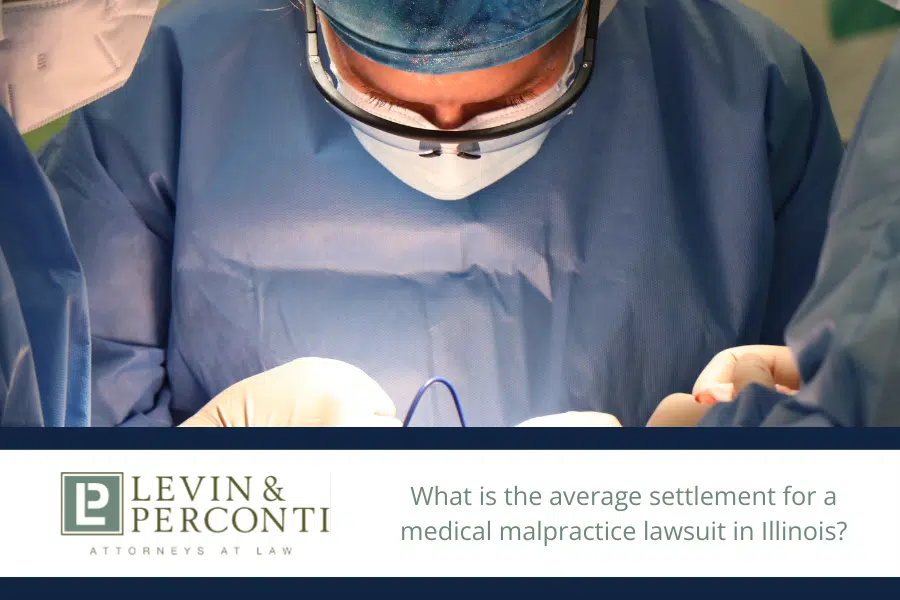
Content Reviewed by:
Michael F. Bonamarte, IV
Content Reviewed by: Michael F. Bonamarte, IV
Since 2005, Michael Bonamarte IV has been a passionate advocate for victims of negligent conduct, corporate malfeasance, and medical malpractice. He has won numerous awards and recognitions, including Best Lawyers in America and Super Lawyers’ Rising Star. He has presented for the American Association for Justice, the AAJ Nursing Home Litigation Group, the John Marshall Law School, and numerous other legal associations. He regularly lectures at Chicago-area aging organizations about nursing home abuse. His writings have been published by the American Bar Association, the Chicago Daily Bulletin, and numerous other prestigious publications.
7 Ways Medical Malpractice Can Occur That You May Not Be Aware Of
According to the National Institutes of Health, about one in 5 Americans will experience a medical error in their lifetime. And at the same time, less than 10% of all medical errors are reported. Because health care has many moving complexities, unfortunately, it leaves a lot of room for error, especially when systems are overworked and understaffed, leaving room for technology mistakes and miscommunication. While three of the most frequent incidences of medical negligence are related to medication, surgeries, and misdiagnosis, this is a broader look at seven ways medical malpractice can also occur.
- Medical Devices
In 2019, the U.S. Food and Drug Administration (FDA) reported an increasing number of patient injuries related to conventional medical devices, such as surgical staplers, electrical grounding pads, and catheters. The FDA used this chance to remind medical providers of the risks associated with device safety and that when improperly used, patients may require exhaustive unplanned surgical interventions, which could lead to painful complications such as bleeding, burns, sepsis, tearing, increased risk of injury recurrence, and sometimes wrongful death.
- Misdiagnosis
A 2020 study published in the Journal of Medical Ethics found that diagnostic errors may affect as many as 12 million – or one out of every 20 – American adults. A majority of malpractice lawsuits related to the emergency management of a disease or injury allege a failure to diagnose and failure to timely treat, a failure to timely refer to a specialist, and allegations of a lack of informed consent. Some of the most commonly misdiagnosed conditions are:
- Cancer
- Heart attack
- Depression
- Celiac Disease
- Stroke
- Lyme Disease
- Fibromyalgia
- Thyroid Conditions
- Aortic Dissection
- Pulmonary Embolism
John Hopkins Medicine has suggested that when patients see a doctor for a new problem, the average diagnostic error rate may be as high as 15 percent.
- Surgical Errors
Whether it is a wrong-site, wrong-procedure, or wrong-patient error, surgical errors should never occur and indicate serious underlying safety problems. Communication issues are a consistent and prominent underlying factor in these cases and can happen before and after a procedure in addition to in the operating room. A 2020 report tilted Medical Error Prevention and published by The National Center for Biotechnology Information shows at least 4,000 surgical errors occur each year in the U.S. with operating on an incorrect body part as one of the most common sources of surgical error.
- Computerized Physician Order Entry Systems, Electronic Health Records
When a patient’s health care provider doesn’t release the right or most updated medical record or refuses to share information, it may flag the cause of a physician’s error or delay in treatment or medical mistake. Incorrect medical documents and false physician notes can also impact a patient’s access to policy benefits. Each time a claim is processed with the wrong information, the dollar amount counts toward that patient’s lifetime. It may exhaust their coverage limits and delay necessary treatments due to out-of-pocket costs.
- Noncompliance of Magnetic Resonance Imaging (MRI) Test Result Recommendations
Magnetic resonance imaging (MRI) is a noninvasive test used to diagnose and detect medical conditions, especially those that impact the joints, spine, and soft tissues such as muscles and tendons. MRI recommendations should be followed by all practitioners to help identify medical concerns and necessary treatment measures. When recommendations for follow-up are ignored or dismissed without a patient’s consent, the likelihood of further patient injuries or disease is high.
- Labor and Delivery Mistakes
Labor and delivery complications can lead to permanent severe injuries to both mother and child. However, 50% of these events are thought to be avoidable with proper planning and care, according to the University of California at Davis Family Practice Network. When a mother or her newborn presents with any birth-related injuries or issues, it is necessary to find out the precise cause of the problem and respond with prompt treatment. When a mother experiences these traumas, she may also face postpartum depression or anxiety, and undergo post-traumatic stress disorder (PTSD).
- Adverse Prescription Drug Effects and Pharmaceutical Errors
According to a new report published by the Institute for Safe Medication Practices, some of the most persistent medication errors and hazards uncovered in 2019 are:
- Selecting the wrong medication after entering the first few letters of the drug name
- Daily instead of weekly oral methotrexate for non-oncologic conditions
- Errors and hazards due to look-alike labeling of manufacturers’ products
- Misheard drug orders/recommendations during verbal/telephone communication
- Unsafe “overrides” with automated dispensing cabinets
- Unsafe practices associated with adult IV push medications
- Wrong route (intraspinal injection) errors with tranexamic acid
- Unsafe labeling of prefilled syringes and infusions by 503b compounders
- Unsafe use of syringes
- 1,000-fold overdoses with zinc
Healthcare providers are tasked with caring for patients from birth until the last moments of life, performing both routine and complex services in addition to providing compassionate care. At least that is the expectation. Unfortunately, medical malpractice is an all too common legal issue occurring when patients entrust their lives and well-being to healthcare providers, only to suffer further injuries or a worsening condition. A medical provider does not have to commit a criminal act to commit medical malpractice. When a provider violates the standard of care or acts recklessly, patients can suffer significant injuries or even death.
If you or someone you love has been harmed by any medical error or negligent provider care, please call the medical malpractice attorneys at Chicago’s Levin & Perconti.
Free Consultation: Levin & Perconti Medical Malpractice Attorneys in Chicago
The attorneys of Levin & Perconti have secured more settlements over $500,000 than any other law firm in Illinois over the last year. If you were a patient at an Illinois health system and suspect medical negligence may have contributed to further injury or the death of a loved one, please contact Levin & Perconti for a FREE consultation. The call is toll-free at 877-374-1417. Or, reach out to us in Chicago at 312-332-2872.



